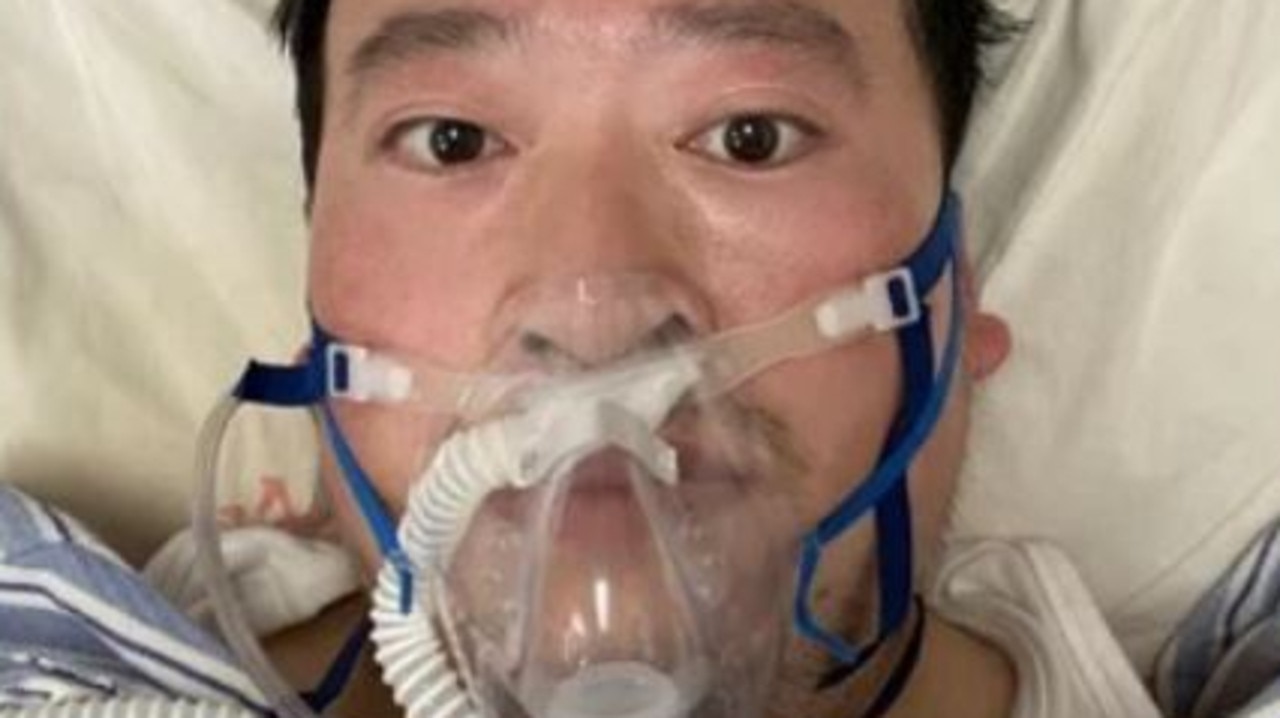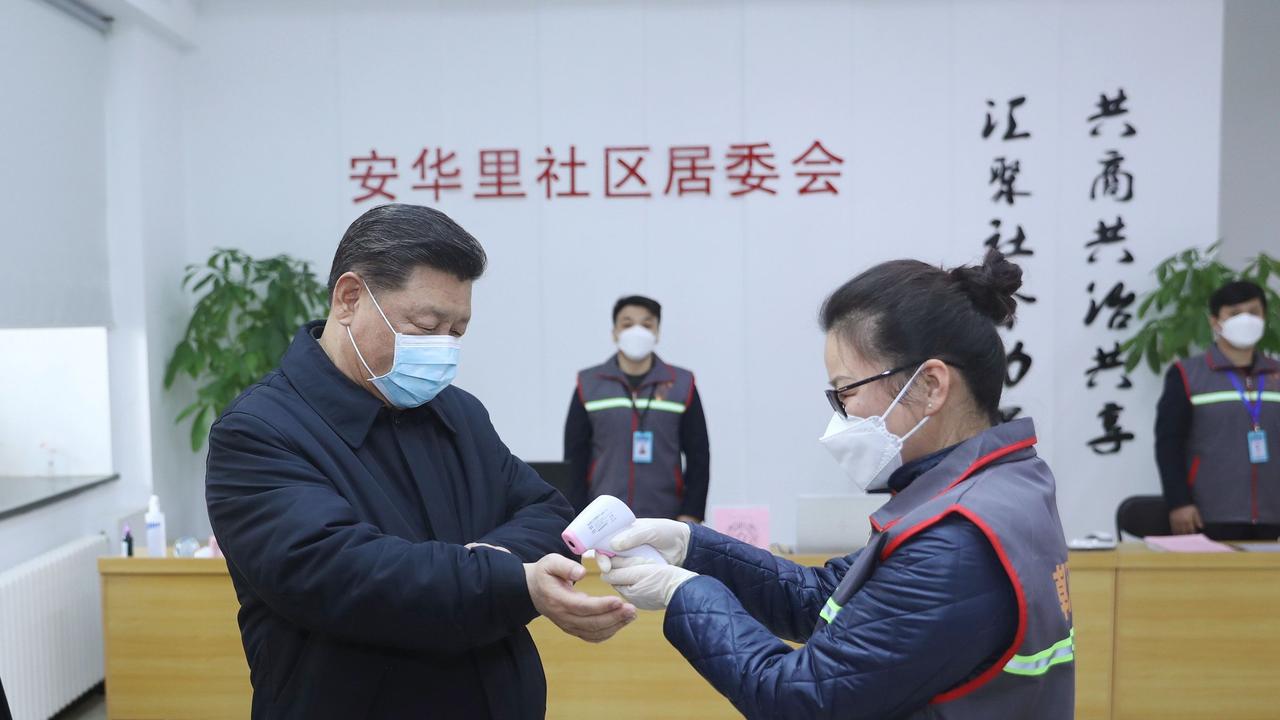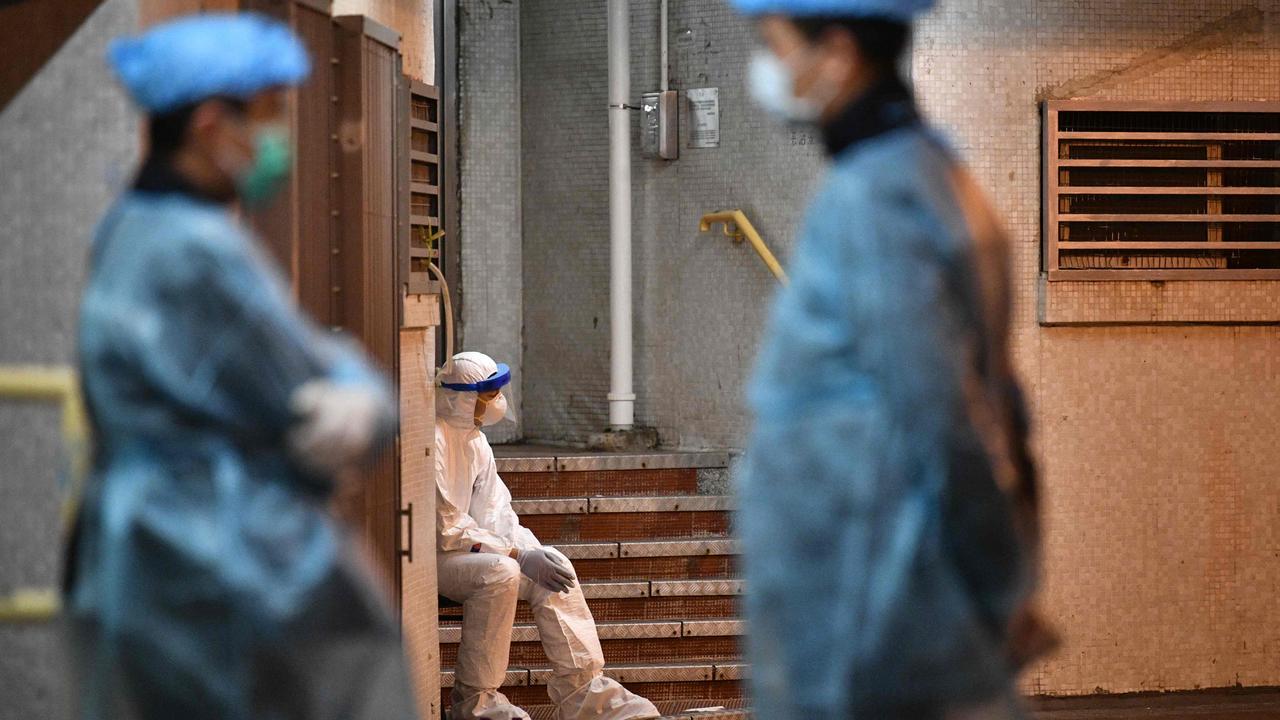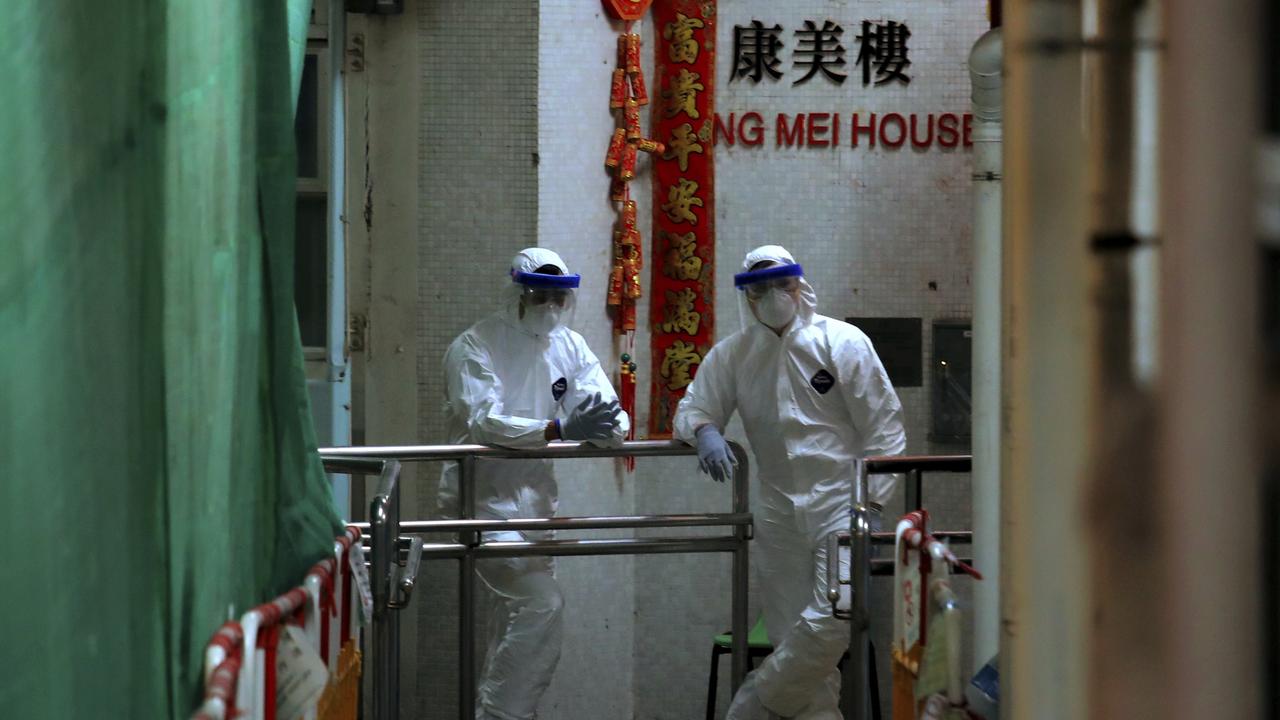Hundreds of doctors infected with coronavirus: China accused of trying to silence reports
The death toll and infections from the newly-dubbed Covid-19 virus have risen again as China struggles to contain the disease.
The death toll from coronavirus has reached 1114 as the number of people infected passes 45,000.
Authorities in the Chinese province of Hubei - ground zero for the Covid-19 epidemic - reported 94 new deaths from the virus today. Although slightly down from yesterday’s grim total, the overall death toll is steadily rising.
The total number of people infected around the world is 45,079.
With 1638 newly-confirmed infections in Hubei, it means there are more than 33,366 people infected in that province alone.
The revised death toll comes as the World Health Organisation warned the disease could spread incredibly quickly.
WHO head of emergency programmes Michael Ryan said Covid-19 had the potential to spread faster than either the Ebola or Sars viruses.
MEDICAL STAFF INFECTED
The number of medical staff infected with coronavirus in Wuhan may be more than 1000.
The infections have caused strain on Wuhan’s hospitals and “deep concern” among health care workers, the South China Morning Post reports.
The Chinese government has been accused of trying to suppress details about the infections among healthcare staff, issuing an edict for the extent of the problem not to be made public. It was not immediately clear why, although the government has been trying to boost morale.
A slide, widely-circulated on social media, taken on January 18 at two different venues, shows the total of confirmed and suspected cases among medical staff was 1101.
A source confirmed the authenticity of the slide with the Post.
A doctor from a major hospital in Wuhan, who asked to remain anonymous, told the Post medical staff were “devastated” when they saw the CAT scans of colleagues who had been infected.
Respiratory doctors in Wuhan told The Economic Observer (ç»æµŽè§‚察网) that the number of health workers who have been infected exceeds what this chart indicates. https://t.co/PAh1IkF1Tl https://t.co/emReT8eED8
— Yaxue Cao (@YaxueCao) February 11, 2020
The rate of infection among frontline staff indicates how easily the disease can be spread.

The revelation comes as outrage builds over the death of Dr Li Wenliang, a Chinese doctor who tried to raise the alarm about the coronavirus.
He was one of eight “whistleblowers’”who tried to warn other medics of the coronavirus outbreak but were reprimanded by local police.
His death was reported by Chinese state media, before a confusing scenario which saw the outlets delete the stories, Dr Wenliang’s hospital deny he had died, before his death was again announced. The chain of events again raised concerns about the Chinese government’s lack of transparency during the outbreak, the New York Times reports.
CHINESE OFFICIALS ‘REMOVED’
Chinese President Xi Jinping made his first public appearance in almost two weeks on Monday, as analysts said the virus could lead to his own “Chernobyl moment”.
Mr Xi has largely kept out of the public eye since the outbreak was first reported at a seafood market in Wuhan, in China’s Hubei province in December.
But as the number of infected continues to rise – both in China and overseas – the government has been under pressure to prove the situation is under control.
Local officials in particular have faced mounting pressure for perceived incompetence – particularly after the death of a Chinese doctor in the provincial capital Wuhan who was punished for raising the alarm about the new virus.
Analysts have also accused them of playing down the extent of the outbreak because they were holding political meetings at the time and wanted to project an image of stability.
RELATED: Chinese President facing ‘Chernobyl moment’
RELATED: Chinese hospital denies Chinese doctor died

On Tuesday, two of the most senior health officials at the epicentre of the virus were sacked, according to state media.
Zhang Jin, the Communist Party boss of the provincial health commission in Hubei, and its director Liu Yingzi were removed from their positions, state broadcaster CCTV reported.
Deputy director of China’s National Health Commission Wang Hesheng will take over the two roles, said CCTV.
In another sign of personnel changes at ground zero of the outbreak, senior Beijing official Chen Yixin has been sent to Wuhan to guide epidemic control work.
Chen is secretary-general of the commission, the Communist Party’s top law enforcement body.
VIRUS RENAMED
Meanwhile, the World Health Organisation has rebranded the coronavirus ‘COVID-19’, as authorities in Hong Kong evacuate 100 people from an apartment block amid fears the virus could spread through drainage pipes.
“We now have a name for the disease and it’s COVID-19,” WHO chief Tedros Adhanom Ghebreyesus told reporters at the latest conference on the virus in Geneva, Switzerland.
Dr Tedros said the “co” stood for “corona”, while the “vi” was for “virus” and the “d” for “disease”. The number “19” was for the year, as the outbreak was first identified on December 31.
The name was carefully chosen to avoid any reference to specific geographical locations, animal species or groups of people, he said.
🚨 BREAKING 🚨
— World Health Organization (WHO) (@WHO) February 11, 2020
"We now have a name for the #2019nCoV disease:
COVID-19.
I’ll spell it: C-O-V-I-D hyphen one nine – COVID-19"
-@DrTedros #COVID19 pic.twitter.com/Kh0wx2qfzk
About 400 scientists are taking part in the two-day international meeting, called to review how the virus is transmitted and possible vaccines against it.
“What matters most is stopping the outbreak and saving lives. With your support, that’s what we can do together,” Dr Tedros said.
“Viruses can have more powerful consequences than any terrorist action,” he added.
The virus, first identified in China, has killed more than 1,000 people, infected over 42,000 and reached some 25 countries.
It is thought to have originated in bats and reached humans via another animal such as snakes or pangolins.
There is no specific treatment or vaccine against the disease, which can cause respiratory failure. Now several companies and institutes in Australia, China, France, Germany and the United States are racing to develop a vaccine – a process that normally takes years.
RELATED: Follow the latest on coronavirus here
HONG KONG APARTMENT BLOCK RESIDENTS EVACUATED
The first day of the conference came as more than 100 people were evacuated from a Hong Kong housing block on Tuesday, after four residents in two different apartments tested positive for the virus.
Locals were forced to leave in the early hours as health officials in masks and white overalls scrambled to work out whether the virus had spread through the 35-storey complex that houses some 3000 people.


Hong Kong is on high alert for any potential “superspreader” events, especially in the towering housing blocks that make the city one of the world’s most densely populated places.
During the 2003 outbreak of Severe Acute Respiratory Syndrome, which killed 299 people in Hong Kong, 42 deaths came from just one housing block where about 300 people were infected.
In that outbreak, the virus was found to have spread through faulty drainage pipes.
Officials said Tuesday’s relocation of residents in Tsing Yi district was a precautionary measure after three members of the same family contracted the virus.
The family lived 10 floors directly below another man who had already been diagnosed as a carrier.
“We are not sure what was the exact route of transmission,” Wong Ka-hing, from the Centre for Health Protection, told reporters.
“It could still be through the usual method of droplets or contact.”
Nonetheless the occupants of 35 flats connected to the same drainage system were moved out.
Health secretary Sophia Chan said four residents who showed flu-like symptoms were taken to a hospital isolation ward but later tested negative for the virus. The others were taken to quarantine camps.
RELATED: What are ‘super-spreaders’?


– with wires



